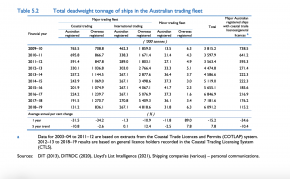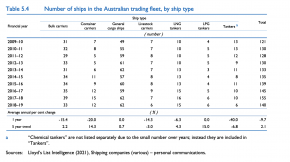aviation_enthus
Member
Yes. One facility is the best option. A government owned “joint user factory” with the ability to house multiple production lines and store tooling and equipment from previous production runs. It could be included as a condition of supply contracts that it must be used. Would be relatively inexpensive to build a massively oversized factory (3-4 times what’s required). I’d be happy if this was considered at all to be honest.Rather then from 3 to 2 it really should go down to a singular location even something along the lines of a common user facility for ground vehicles with multiple companies sharing the main production facilities. All well and good to have multiple sites but it increases risk of death valleys where as having a single site between various vehicles across the board, exports and upgrades/maintenance could allow such a site to retain enough personnel to make it cost effective (ie: harder for some random polly to want to cut to save a dollar) and even put them in a better position to be able to ramp production up when/if needed. Hell throw in production or trains and trams because between NSW and VIC we technically have the scale for continuous production of those with majority to full Australian content which would benefit a few of the defence contractors to keep them busy and thus keeping them sustainable and by extension keeping us self sufficient.
I’ve just finished reading a 2 part book about the production of munitions and military equipment in Australia. Covers the period of 1900-1945:
“The Great Power Struggle for Australia, 1900-1945” Volume I & II.

Andrew Taylor Ross
Author of The Great Power Struggle for Australia, 1900-1945 and The Great Power Struggle for Australia 1900-1945
www.goodreads.com
It details the hard lessons Australia learnt during WW1 in regards to supply of military equipment (and even civil goods). Details the various steps the British in particular, took to try and block Australia in its attempts to be self sufficient in some areas of production between 1918 and 1939. I would highly recommend it especially given the current plans for ship building, missile production etc. Plus the supply issues presented by COVID and our current trade “war” with China.
Seems we have been here before!! This is one of main reasons I love history and it’s one of the small things I hope I can contribute on this site.
There was a department created after WW1 called the Munitions Supply Board (MSB). The MSB was responsible for assisting civil industry to develop various production capabilities and providing consistent standards for measurements etc. The current small arms factory at Lithgow was a former MSB factory.
I guess you could summarise the whole subject down to this:
We had massive supply issues during WW1 despite not being directly attacked. This resulted in the creation of the MSB. What followed was a bipartisan effort to develop a level of self sufficiency using the MSB as a platform to organise the military side of this goal. By the beginning of WW2 in the Pacific, Australia had the ability to manufacture a large range of munitions on our own. We also had the ability to modify imported designs (like the P-51) to enable efficient local production.
Fast forward to today and a lot of the same issues exist that we faced before WW1.
- negligible merchant fleet. Means we will face significant hurdles importing important materials during wartime. Even if we can get foreign ships to sail here, we can expect significant price increases
- large amounts of imported civilian goods. Electronics etc. This will mean we could reasonably expect a significant decline in our “standard of living”. This also occurred in WW1. (Obviously a war will result in shortages, I talking about imported goods that we DON’T even manufacture onshore).
- minimal “light/medium” manufacturing. Building trains and shipping is heavy manufacturing. If you read the books mentioned above, you’ll see the large roll played by GM (Holden) in particular (amongst other manufacturers).
That being said, I’d also argue Australia has much better awareness of the threats we face (as far as self sufficiency goes) than that period in our history (1900-1914). However we still have a long way to even get back to our starting point at the beginning of WW2. (In terms of self sufficiency).
Last edited:


